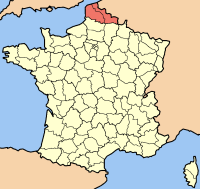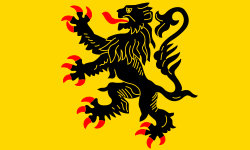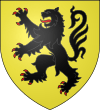Nord-Pas-de-Calais facts for kids
Nord-Pas-de-Calais was once an important administrative region in France. It is now part of a larger region called Hauts-de-France. The main city, or "prefecture," of Nord-Pas-de-Calais was Lille.
In 2012, about four million people lived in this area. A large number of them, around 365,000, lived in the city area of Lille. The region was made up of two departments: Nord and Pas-de-Calais.
Contents
Economy of Nord-Pas-de-Calais
The economy of Nord-Pas-de-Calais was built on several key industries. These included carbon (like coal mining), steel production, and making textiles (fabrics).
Jobs and Industries
A big part of the jobs in this region were in the "secondary sector." This means jobs related to manufacturing and industry. About 33.8% of people worked in these industries, which was higher than the national average in France.
Challenges and Improvements
The region faced some challenges, including a higher rate of unemployment compared to the rest of France. However, new projects helped improve things. Big investments were made in modern transport, like the TGV (France's high-speed train) and the Channel Tunnel. The Channel Tunnel connects France to England under the sea.
Tourism and Location
Tourism also became important for the region. Its location near the border with Belgium and close to England made it a popular place for visitors. Many people traveled through or stopped in Nord-Pas-de-Calais.
Images for kids
-
Liane in Pas-de-Calais
-
Canadian National Vimy Memorial near Arras
-
Lille, the largest city in Nord-Pas-de-Calais
-
Allotments in Tourcoing (Nord), France. In the background, the church Notre-Dame de la Marlière
See also
 In Spanish: Norte-Paso de Calais para niños
In Spanish: Norte-Paso de Calais para niños













